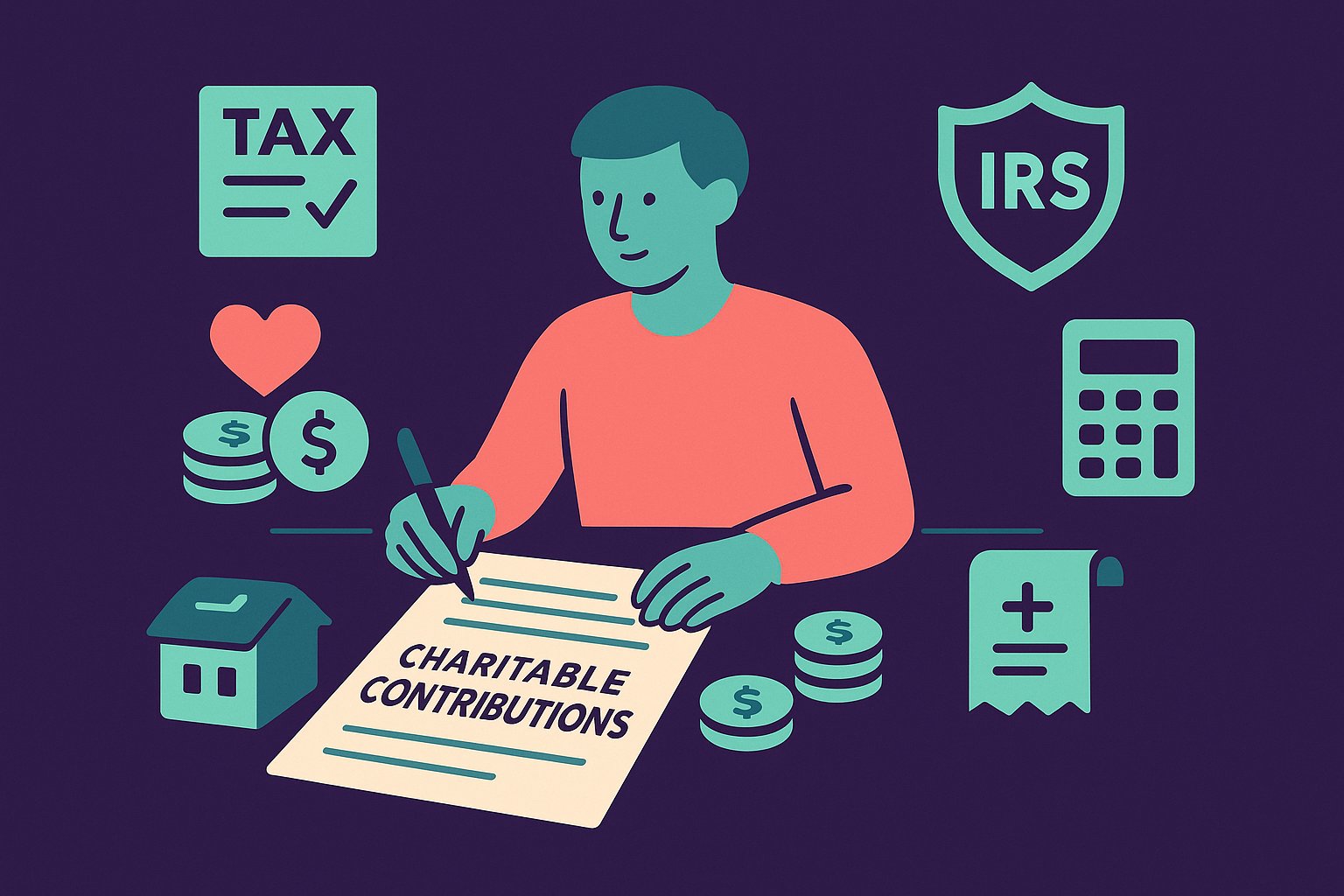The Allure of Giving: Why Donors Seek Tax Benefits
Philanthropy has always held a special place in hearts worldwide, but in the modern age of dazzling crowdfunding campaigns, many donors find themselves drawn not only by compelling stories but also by the promise of tax advantages. As individuals navigate year-end giving or plan for significant charitable contributions, understanding how tax benefits can amplify their impact becomes a powerful motivator. When donors realize that a portion of their generosity may be offset by reduced taxable income, they often feel encouraged to give more—and give more confidently. This synergy between altruism and financial savvy makes it possible to support causes close to one’s values while enjoying tangible financial rewards, creating a win-win scenario that rewards both giver and receiver.
Demystifying Qualified Charitable Contributions
Before diving into the specifics of crowdfunding, it is essential to understand what constitutes a qualified charitable contribution in the eyes of the IRS. In simple terms, only donations made to organizations recognized as 501(c)(3) nonprofit entities—the vetted, tax-exempt charities—are eligible for an itemized deduction on federal income tax returns. This means that if you contribute directly to a registered nonprofit’s campaign on a crowdfunding platform, you can claim the full amount of your gift (subject to IRS limits) as a deduction. However, donating to an individual through a personal crowdfunding appeal does not typically qualify for the same benefit, even if the cause itself is undeniably noble. By grasping this distinction, donors can ensure they capitalize on the tax advantages each time they log into a crowdfunding site.
Distinguishing Between Donations to Individuals and Organizations
Crowdfunding has democratized charitable giving, allowing individuals to raise funds for personal crises, medical bills, or community projects. While these personal appeals often go viral and tug at the heartstrings, they do not automatically qualify as tax-deductible contributions. IRS guidelines demand that only contributions made to qualified organizations—not to private individuals—be claimed as charitable deductions. This crucial nuance means that a donor’s gift to a parent raising funds for their child’s tuition typically cannot be written off, whereas a donation to a nonprofit that administers scholarship funds may be. When exploring crowdfunding campaigns, discerning whether the recipient is a bona fide 501(c)(3) or simply a private beneficiary is the first and most critical step for anyone eager to enjoy tax benefits alongside their philanthropic spirit.
Navigating the IRS Rules: What Qualifies for Deduction
Once donors have confirmed they are supporting a registered nonprofit, the next layer of complexity emerges: adhering to IRS rules that govern how much and when one can claim deductions. Contributions must be made “no strings attached,” implying that donors cannot receive goods or services of substantial value in return. A small token—like a branded coffee mug valued at five dollars when a donor gives fifty—generally does not disqualify the deduction. Yet, if a crowdfunding campaign offers tiered rewards such as event tickets, subscriptions, or merchandise, donors must subtract the fair market value of those items before calculating the deductible portion. Additionally, donors should be aware of contribution limits: for most individuals, up to sixty percent of adjusted gross income (AGI) can be deducted for cash gifts. Understanding these nuances ensures donors accurately report their charitable giving, avoid IRS red flags, and stay firmly within the legal boundaries set forth for tax advantages.
Choosing the Right Platform: Ensuring Tax-Deductible Status
The booming array of crowdfunding platforms can be both exhilarating and perplexing. To harness tax benefits, donors must select platforms that clearly distinguish nonprofit-led campaigns from those run by individuals. Some sites—such as GoFundMe Charity (formerly CrowdRise), GlobalGiving, and Classy—partner exclusively with registered nonprofits, automatically designating contributions as tax-deductible. Other mainstream platforms, like a standard GoFundMe or Facebook Fundraisers, allow anyone to create a fundraiser, which can muddy the waters. Before clicking “Donate,” donors should look for verbiage indicating that contributions are processed through a fiscal sponsor or that the organization has confirmed its tax-exempt status. Well-designed campaigns often display the nonprofit’s EIN (Employer Identification Number) or a direct link to the IRS verification page. By choosing platforms that spotlight certified nonprofits, donors eliminate guesswork and ensure their charitable gifts meet IRS criteria.
Leveraging Receipts and Documentation: Best Practices
After making a donation, the paperwork phase begins—a vital step often overlooked by eager philanthropists. For every deductible gift, donors should retain a written acknowledgment from the nonprofit documenting the amount given and the date of the contribution. Electronic receipts sent by crowdfunding platforms usually fulfill this requirement but must clearly state that no goods or services (or only nominal ones) were exchanged. If donations exceed $250, the IRS mandates that the acknowledgment include additional details: a description of any non-cash items donated or a statement confirming that no goods or services were provided. To keep track, savvy donors create a dedicated folder—digital or physical—to archive receipts and acknowledgments. This practice not only streamlines year-end tax filing but also shields contributors in the event of an IRS audit. By mastering the art of documentation, donors can seamlessly validate their charitable claims, transforming good intentions into verified, deductible actions.
Maximizing Value: Strategic Donation Timing and Bunching
Even after confirming a campaign’s deductible status and securing the necessary receipts, donors can unlock further tax benefits through strategic timing and the concept of “bunching.” When contributions are clustered within a single tax year that pushes itemized deductions beyond the standard deduction threshold, the tax savings can be magnified. For instance, if you ordinarily itemize deductions but hover just under the standard deduction amount, an additional donation of two hundred dollars—or the equivalent in multiple smaller gifts—could tip the scale, yielding a significant reduction in taxable income. Some philanthropic-minded individuals even plan multi-year giving strategies: making two years’ worth of donations in one calendar year to benefit from heightened deductions and then scaling back in the subsequent year. By thoughtfully timing donations to high-impact crowdfunding campaigns—especially those aligned with year-end drives—donors ensure they maximize both generosity and tax efficiency.
Understanding State-Level Considerations and Limits
Federal tax rules often take center stage, yet state-level nuances can also influence the net benefit of charitable giving. Some states permit deductions or credits for donations to qualifying nonprofits on state income tax returns, but the rules vary widely. In California, for example, no state-level deduction is available for contributions, whereas in New York, donors may claim a state charitable contribution credit capped at five hundred dollars for individuals (one thousand dollars for married couples filing jointly). When supporting a crowdfunding campaign that spans multiple states—such as a national disaster relief effort—donors should verify how each recipient nonprofit’s state registrations affect local tax filings. Additional complexities arise when a state imposes a cap on total deductions, restricting how much of one’s AGI can be applied to charitable gifts. By consulting with a tax professional or utilizing reliable online resources, donors can navigate these state-specific landscapes, ensuring their contributions to crowdfunding campaigns yield optimal tax advantages across all jurisdictions.
Pitfalls to Avoid: Common Mistakes That Nullify Deductions
Even well-intentioned donors can inadvertently forfeit tax benefits by overlooking key rules. One frequent misstep occurs when contributors assume every crowdfunding donation is deductible, leading them to neglect verifying the recipient’s tax-exempt status. Another trap lies in receiving substantial “thank-you” gifts—like high-value event tickets or collectible merchandise—without subtracting their fair market value before claiming deductions. Failure to obtain proper documentation—especially for donations over $250—can also land donors in hot water if questioned by the IRS. Additionally, inadvertently giving to a “sister organization” without realizing it is not itself a registered 501(c)(3) can render the gift non-deductible. To sidestep these pitfalls, donors should always confirm the eligible portion of each gift, maintain meticulous records, and double-check each nonprofit’s tax status through trusted databases. By staying vigilant and informed, contributors safeguard their charitable tax benefits and uphold the integrity of their giving strategies.
Beyond Tax Savings: The True Impact of Charitable Giving
While tax deductions provide an attractive incentive, the core motivation behind crowdfunding donations should remain the desire to effect positive change. Tax benefits may sweeten the decision to give, but the real reward lies in witnessing tangible progress—be it a life saved, a community revitalized, or innovative research brought one step closer to breakthrough. Appreciating this dual perspective—where financial prudence and heartfelt philanthropy coexist—elevates the donor experience. When contributors recognize that their generosity extends far beyond a line on a tax return, they forge deeper connections to the causes they support, often inspiring peers to participate in crowdfunding efforts. Embracing both the practical and emotional dimensions of giving ensures that tax advantages serve as complementary rewards, not the sole driver. Ultimately, understanding tax benefits is about empowering donors to contribute more strategically, thereby fueling campaigns with greater momentum and fostering enduring impact.
Navigating the intersection of crowdfunding and tax benefits may initially appear daunting, but with a clear roadmap, donors can harness these advantages to multiply their generosity. By confirming a campaign’s 501(c)(3) status, adhering to IRS documentation requirements, timing contributions strategically, and remaining mindful of state-specific rules, contributors secure valuable tax deductions while fueling meaningful change. The result is a virtuous cycle: donors feel confident knowing their charitable dollars stretch further, nonprofits receive crucial funding to advance their missions, and communities benefit from enhanced support. Beyond dollars and deductions, the true essence of giving shines through when tax-savvy philanthropy merges with genuine compassion. Armed with these insights, every donor can step into crowdfunding campaigns with clarity, purpose, and the conviction that their support creates lasting, transformative impact.




